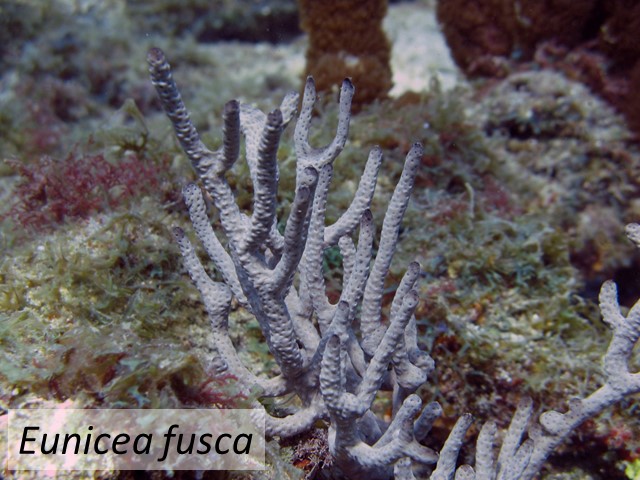
Family: Plexauridae
Common Name(s): Doughnut sea rod.
Colony Form: Small irregular candelabrum with sparse and disorganized branching but in a dichotomous trend; colonies usually less than 30 cm, but up to 50 cm tall.
Axis: Very thin, almost imperceptible; cylindrical in cross-section.
Branches: Slim branches 2.5-3.5 mm in diameter; tip sometimes slightly bulbous.
Apertures: Low calyx developed as enlargement of weak lower lip.
Mucus: Absent
Color: Black-gray to ochre; polyps brown.
Sclerites: Axial layer: spindles to 0.2 mm long, colorless or slightly violet, sometimes with large ornamentation. Middle layer with spindles to 2 mm long. Surface layer: clubs with smooth folds, sometimes fused, to 0.18 mm long. Polyp armature: slightly curved rods 0.05-0.22 mm long.
Habitat: Protected reef areas with intermediate wave exposure and depth, to ~15 m.
Distribution: Widespread: Bahamas, Bermuda, South Florida, Gulf of Mexico, and throughout the Caribbean Sea.
Notes: Grows mainly through asexual propagation. E. fusca size and colony construction differ from that of E. tayrona due to asexual propagation in the former. Specimens of the two species taken at the same site differ in composition of secondary metabolites (terpenoids).
References: Bayer (1961), Cairns (1977), Cobar et al. 1997, Sánchez (2009), MSIP (2010).
Similar Species: Eunicea asperula; Eunicea tayrona; Eunicea pallida










